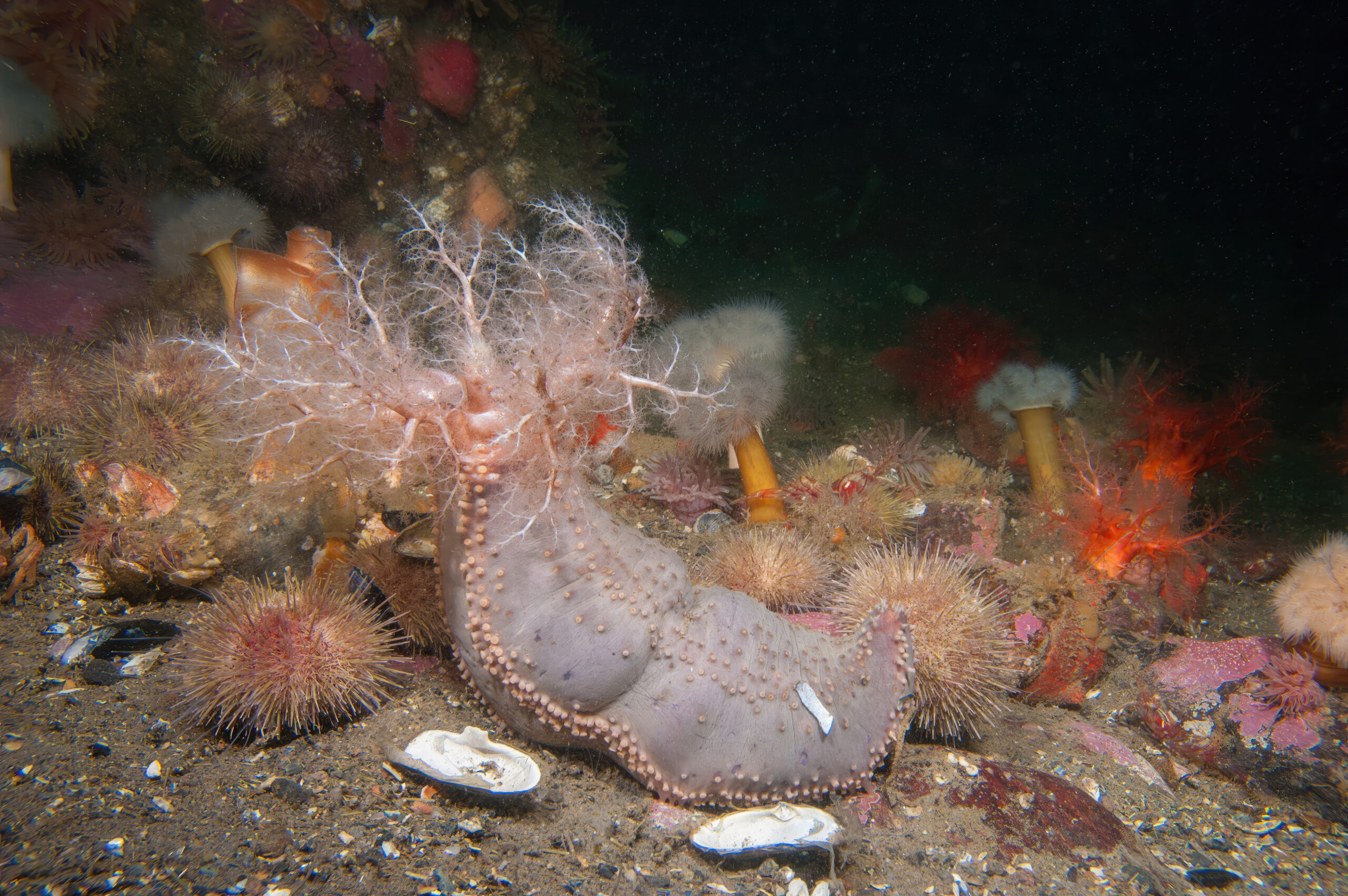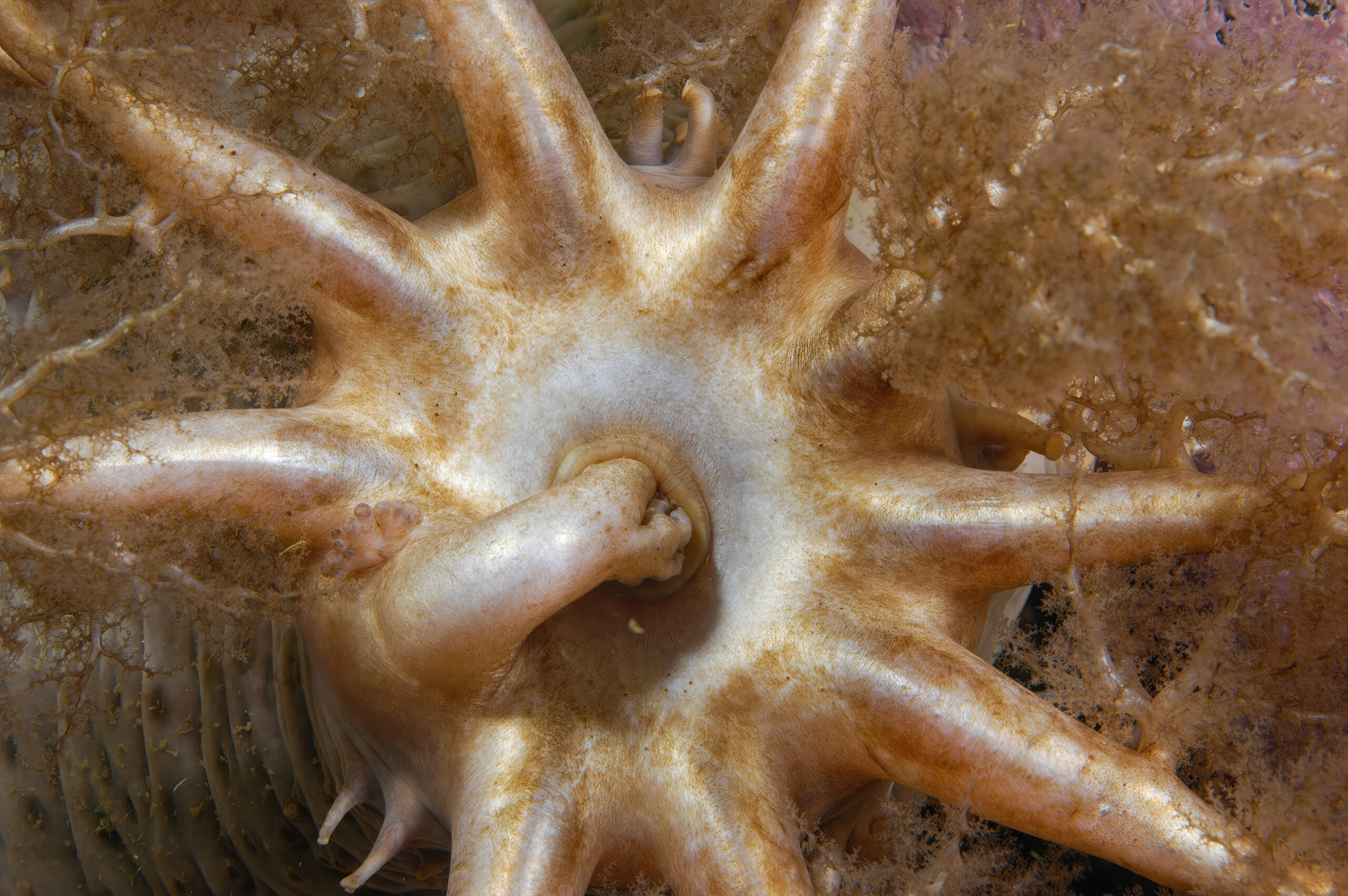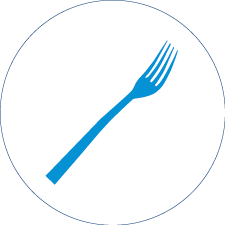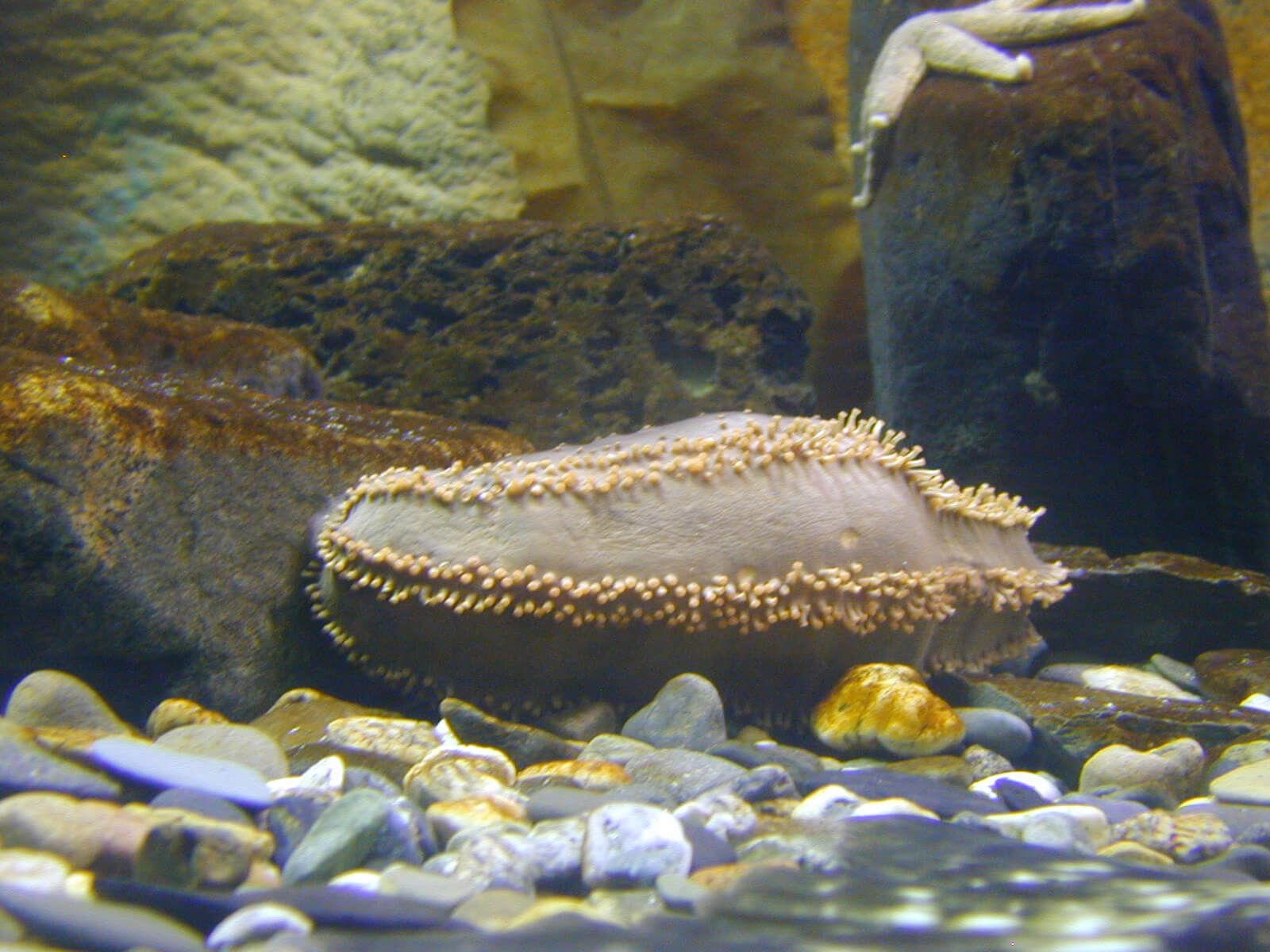
SIZE:
Up to 50 cm in length and 13 cm in diameter.
LIFE EXPECTANCY:
Estimated to live to more than 8 years of age. The absence of solid parts in the orange-footed sea cucumber makes it difficult to determine its age and longevity.
LIFE CYCLE:
Fertilization takes place between March and July and occurs when the eggs laid by the female meet the sperm expelled into the water by the males. Then, 48 hours later, larvae form and float on the surface until autumn. They then return to the seabed.
The orange-footed sea cucumber has a cylindrical shape. Its colour can range from brown to greenish, mauve or orange-red. Its skin is tough and varies in rigidity. It has 10 retractable tentacles to which plankton will stick. It then inserts the tentacles into its mouth to lick them and feed. The sea cucumber has an anus through which it breathes. Teeth protect this orifice. When it senses danger, it uses this orifice to expel its intestines. Its body has small feet, called podia (singular: podium), which it uses for locomotion. Also known as an ambulacrum or tube feet, they are distributed in five longitudinal rows.
Coastal zone, 20 to 500 m depth.

Sea cucumbers like rocky or sandy bottoms.
Credit: Richard Larocque, photo taken at Grandes Bergeronnes.
PREYS:
Plankton
PREDATORS:
Blood stars
Sunstars

To feed itself, sea cucumbers have 10 tentacles that it can bring inside its mouth.
Credit: Richard Larocque, photo taken at Les Méchins.
MACHINES:
Dredging, hand-harvesting by diving.
REGULATIONS:
- Minimum legal size: 11.4 cm
- Fishing season and limited number of fishing days per year
- One permit per fishing zone
Exploratory fishing in Québec started in 2008 with possible plans for commercial fishing. More data on the life cycle and state of the orange-footed sea cucumber stocks is needed before commercial fishing can be authorized. However, careful harvesting will be required, as sea cucumbers have difficulty recovering from overharvesting.
At present, the main market for sea cucumbers is in Asia.
Orange-footed sea cucumber is a Smarter seafood-listed species.
BENEFITS:
Rich in non-fat protein, minerals, and vitamins A, B, D and E. Low in calories and lipids.
Sea cucumber is believed to have beneficial effects on tendinitis. In China, it is known as sea ginseng and has been used medicinally for centuries.
LET’S COOK:
Firm, gelatinous texture; mild flavour.
Sold dried or frozen.
Before being prepared, sea cucumbers must be rehydrated for two or three days. Patience and organization are needed to enjoy this delicacy.
OUR CULINARY ADVICE:
- In soups, stir-fries and marinades, add the cucumber at the end of the preparation. It will disintegrate if overcooked.
- Since 2023, “pop-combres” (popcorn cucumbers) have been sold on the Québec market. They are the perfect snack for a nice evening around the campfire.
Hoping to enjoy a lovely evening?
Although they do not look like it, sea cucumbers are said to have aphrodisiac properties. A good reason to try them?






